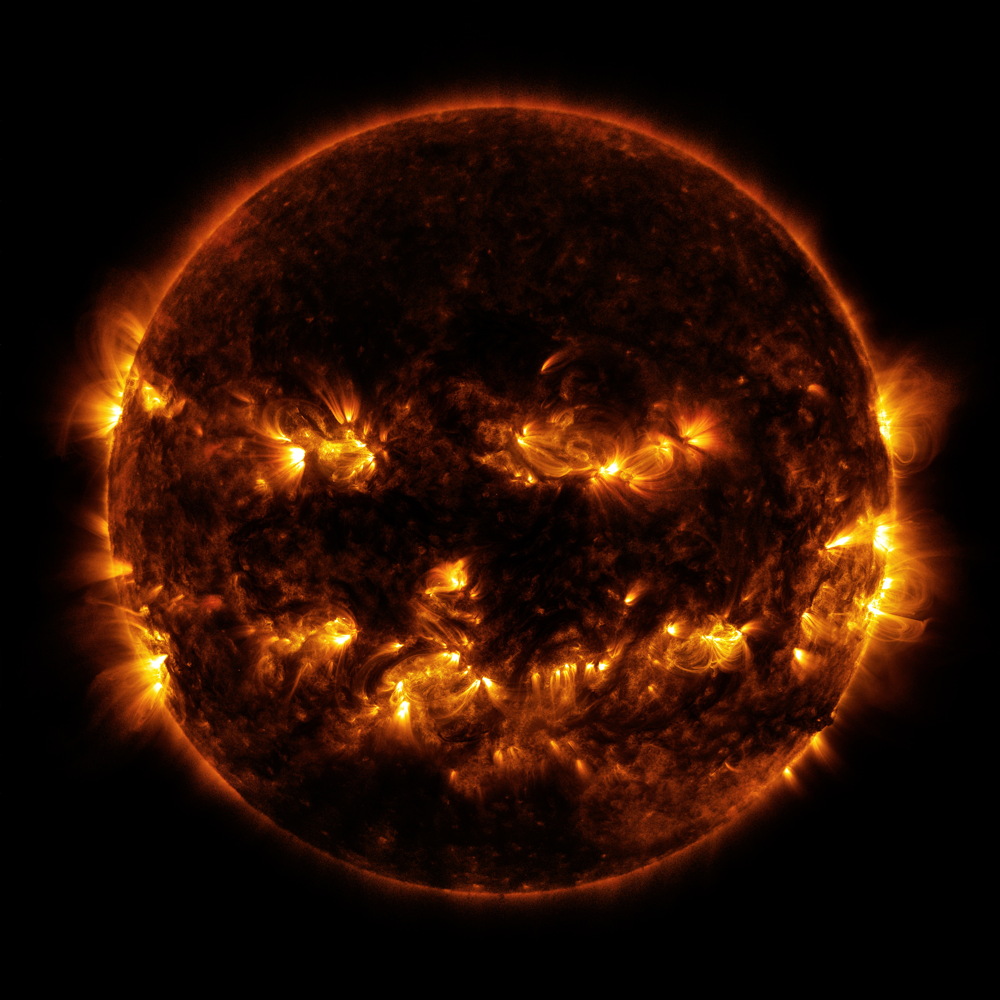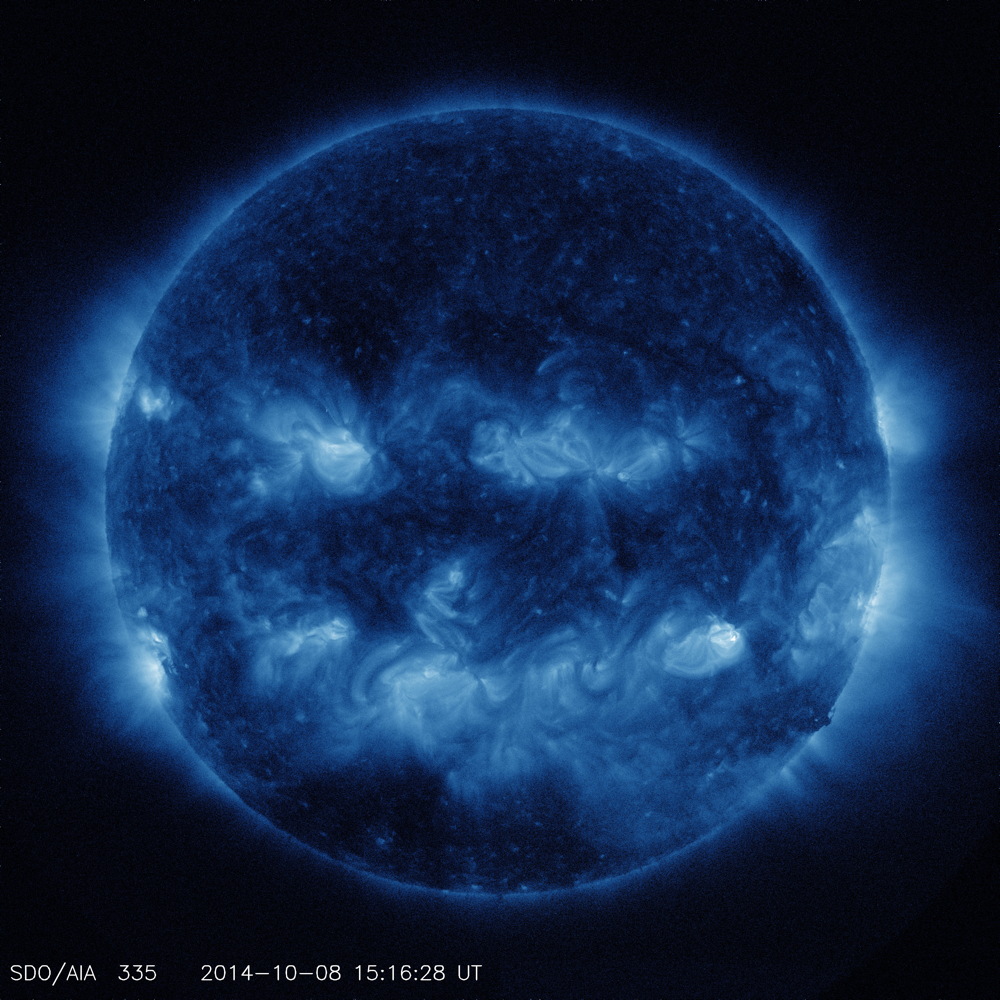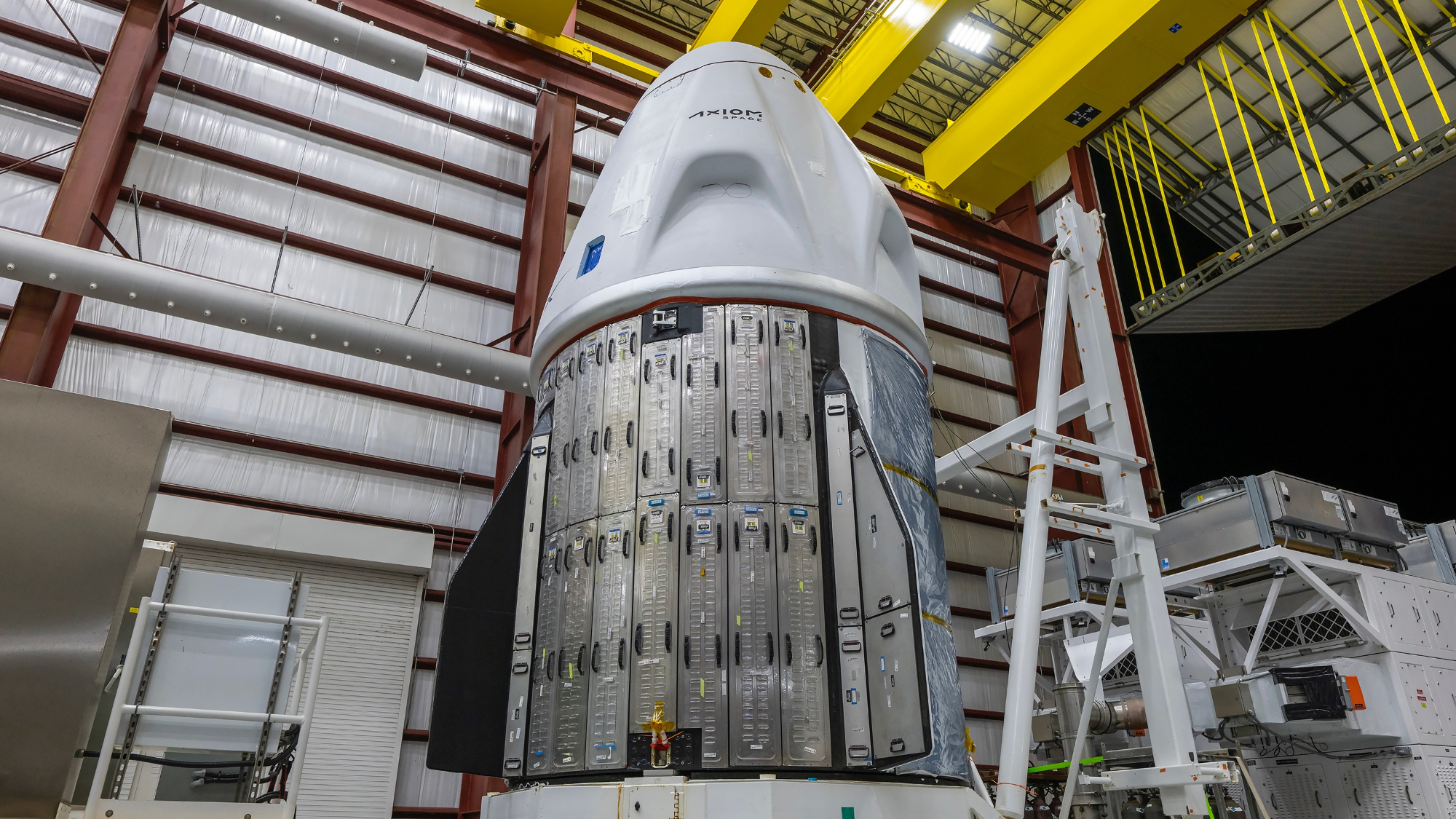NASA Spots Creepy Face on the Sun (Photos)

Boo! An amazing new photo taken by a NASA spacecraft seems to show the sun with creepy jack-o-lantern grin just in time for Halloween.
NASA's Solar Dynamics Observatory (SDO) snapped the composite photo as the spacecraft stared at the sun from its spot in space on Oct. 8, 2014. In the image, hotspots of magnetic fields on the sun have gathered to form what appears to be two "eyes," a nose and a super-spooky grin on the sun's face. There even appear to be ears on the sides of the sun.
The image is a composite of two taken in extreme ultraviolet light. Active regions on the sun, which include magnetic activity in the sun's atmosphere (corona), shine brighter and created the jack-o-lantern-like face.
The sun is at the peak of its 11-year solar cycle, although this one has been a bit more quiet than peaks of the past. The solar peak is associated with huge solar flares and coronal mass ejections (CMEs, bursts of hot plasma sent into the solar system by the sun) that occur as the sun's magnetic fields twist and snap.

The goal of SDO is to monitor the sun's activity to provide better "space weather" forecasts for Earth. Charged particles (associated with solar flares and CMEs) emanating from the sun can spark auroras in the Earth's atmosphere as the particles travel along magnetic fields and excite molecules such as oxygen.
More severe solar events can cause disruptions in satellites and also in power lines, such as a large storm that knocked out much of the power grid in Quebec, Canada in 1989.

SDO launched in 2010 and examines how the sun's magnetic field is created as well as how magnetic energy travels through the solar wind — energetic particles that flow from the sun and through the solar system towards interstellar space.
Get the Space.com Newsletter
Breaking space news, the latest updates on rocket launches, skywatching events and more!
Follow Elizabeth Howell @howellspace. Follow us @Spacedotcom, Facebook and Google+. Original article on Space.com.
Join our Space Forums to keep talking space on the latest missions, night sky and more! And if you have a news tip, correction or comment, let us know at: community@space.com.

Elizabeth Howell (she/her), Ph.D., was a staff writer in the spaceflight channel between 2022 and 2024 specializing in Canadian space news. She was contributing writer for Space.com for 10 years from 2012 to 2024. Elizabeth's reporting includes multiple exclusives with the White House, leading world coverage about a lost-and-found space tomato on the International Space Station, witnessing five human spaceflight launches on two continents, flying parabolic, working inside a spacesuit, and participating in a simulated Mars mission. Her latest book, "Why Am I Taller?" (ECW Press, 2022) is co-written with astronaut Dave Williams.
